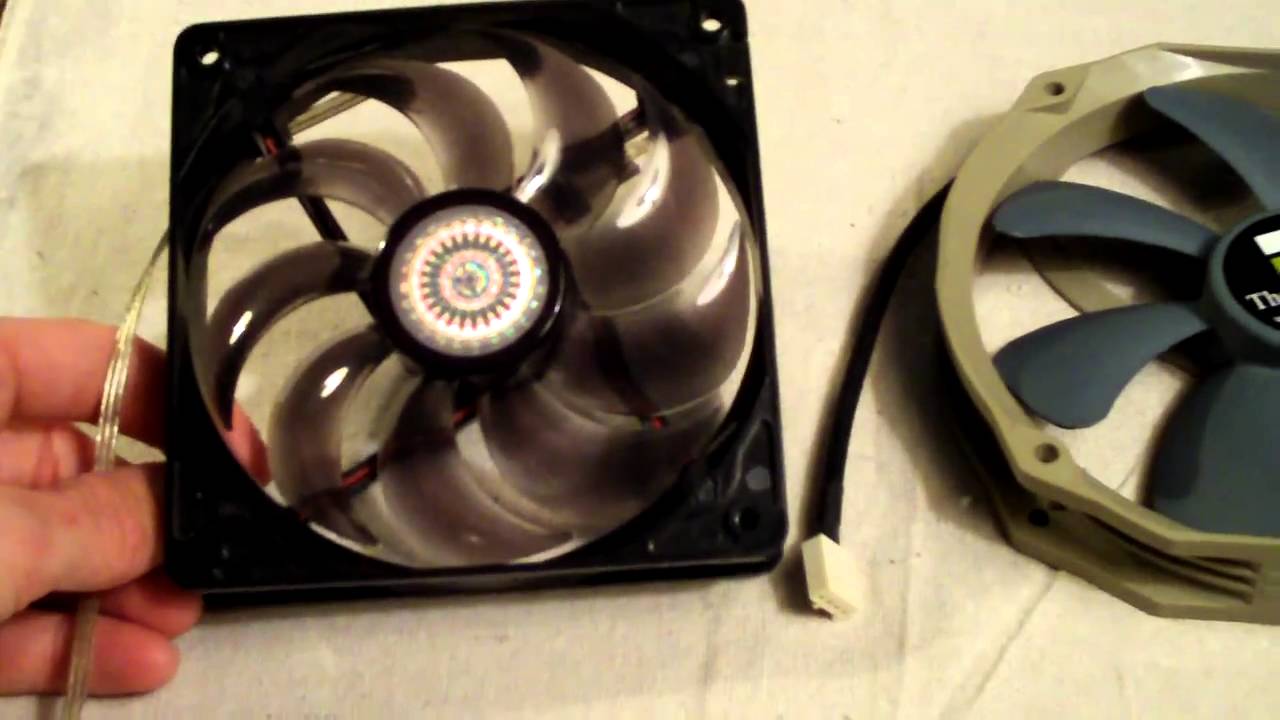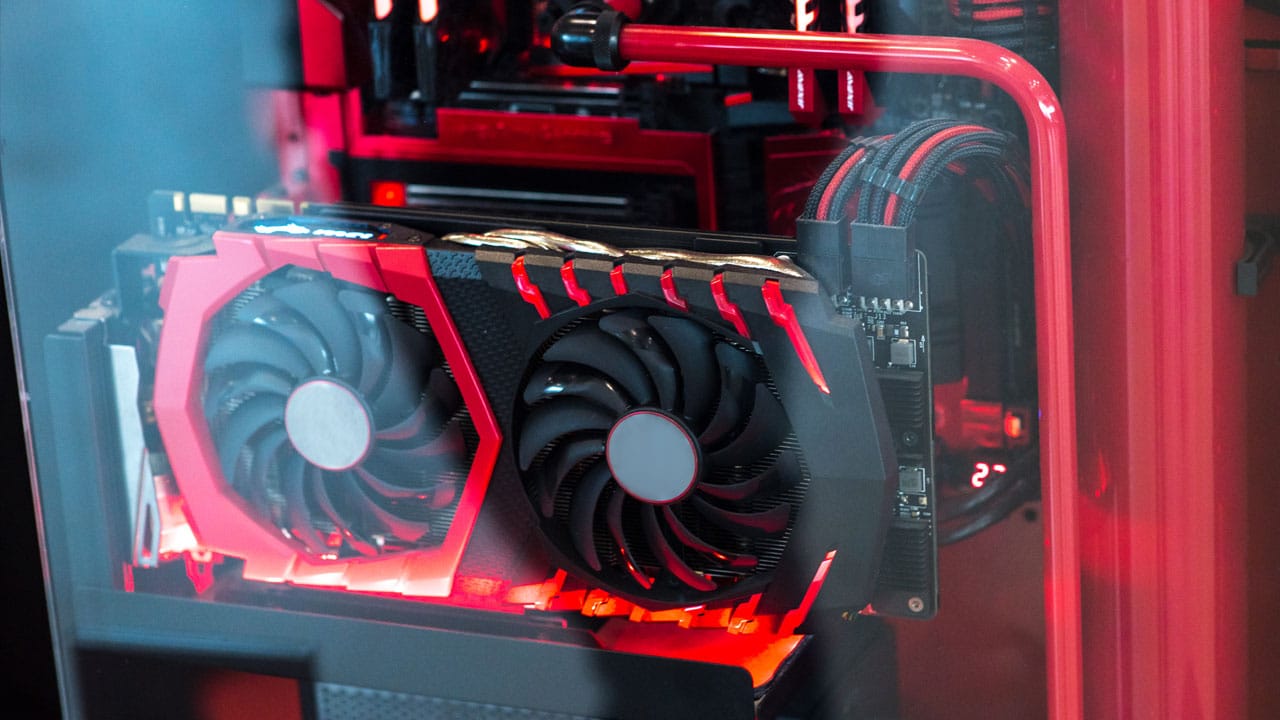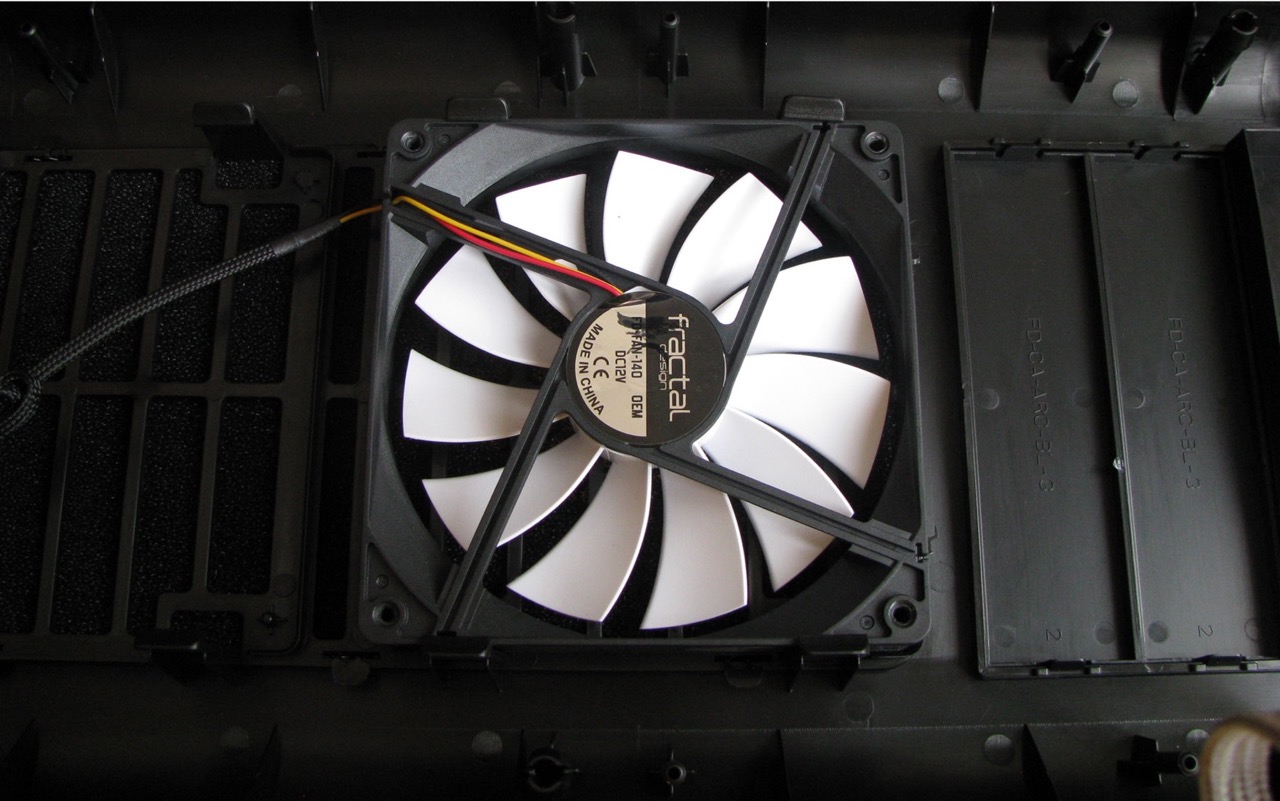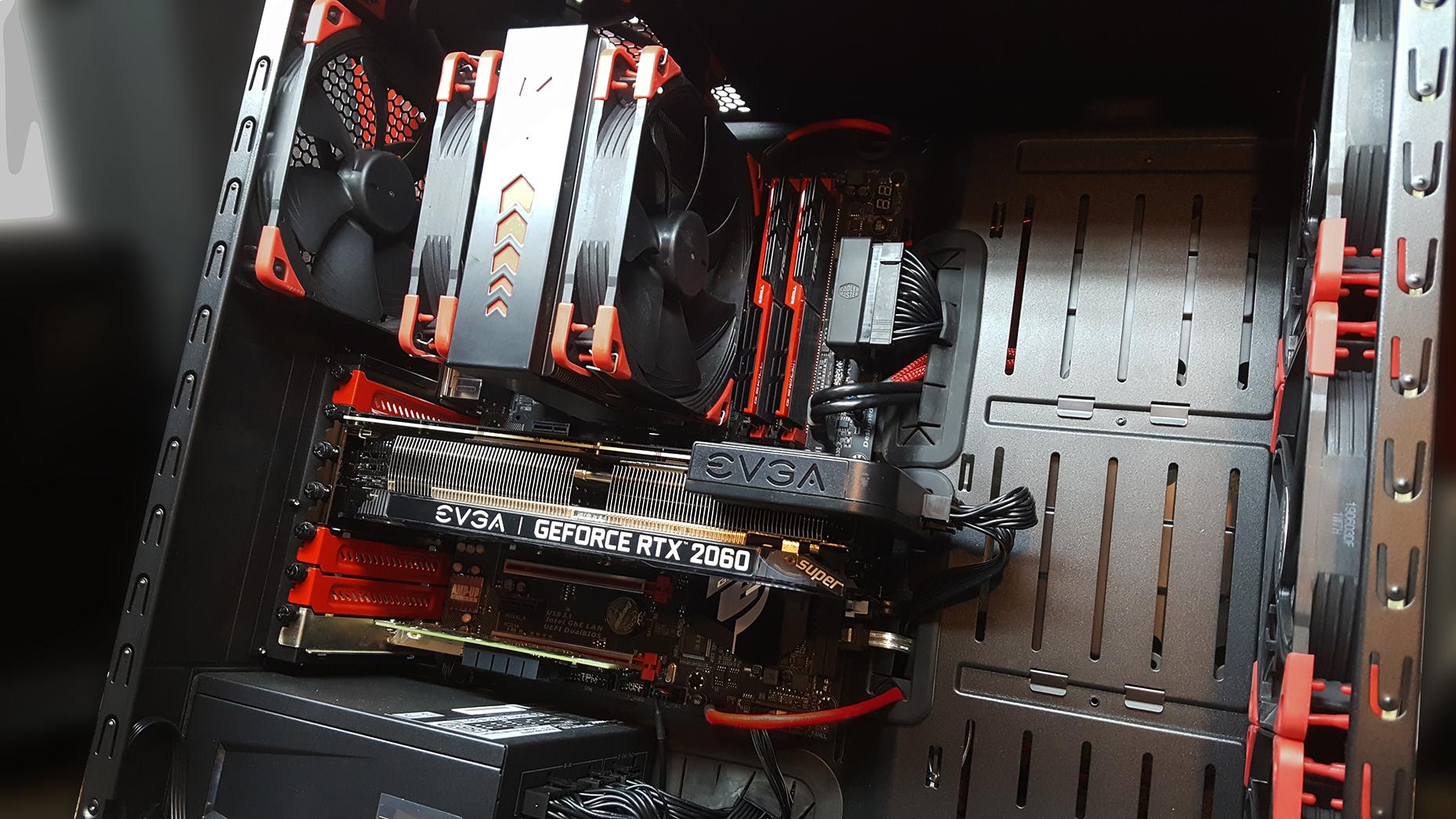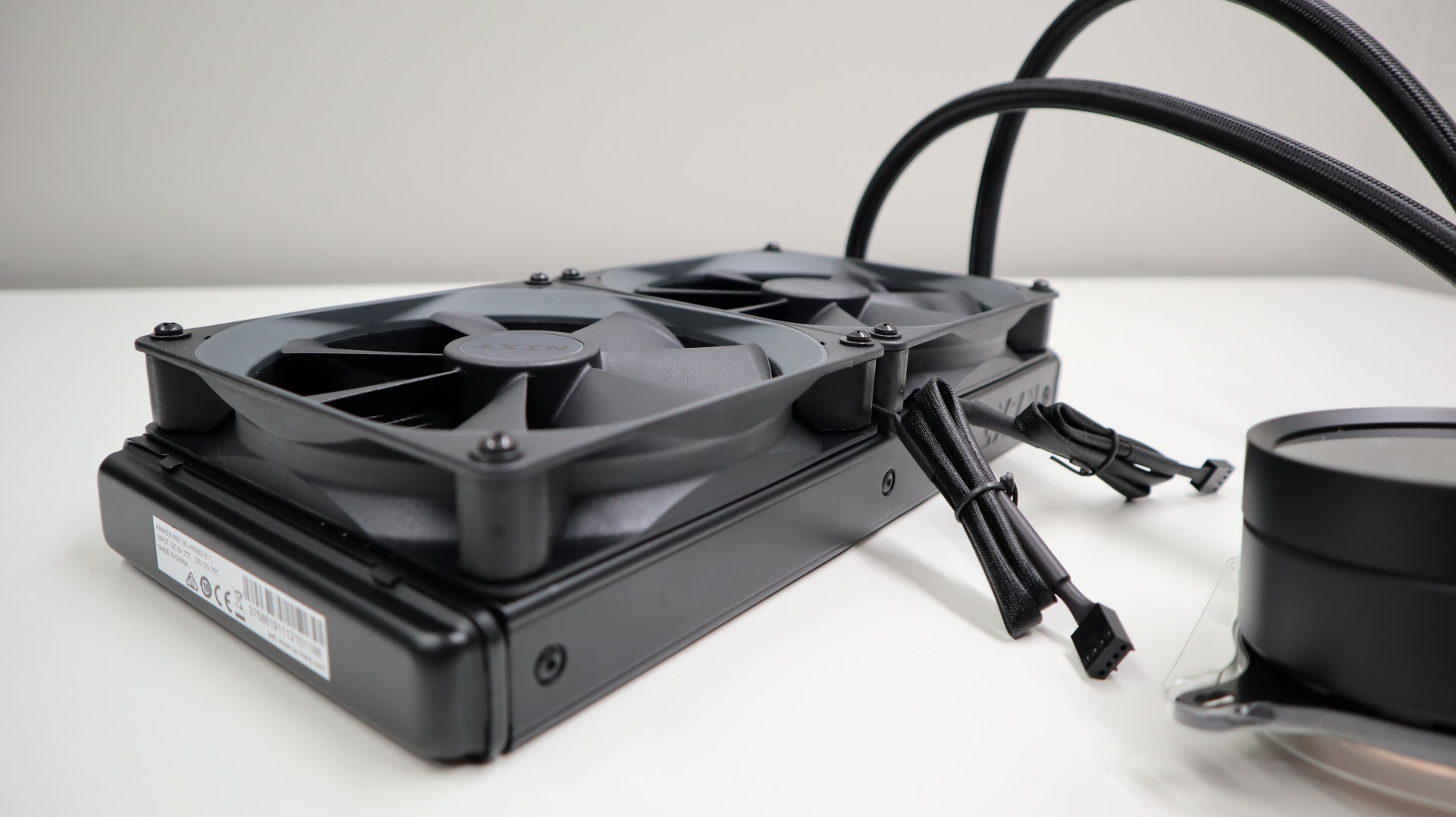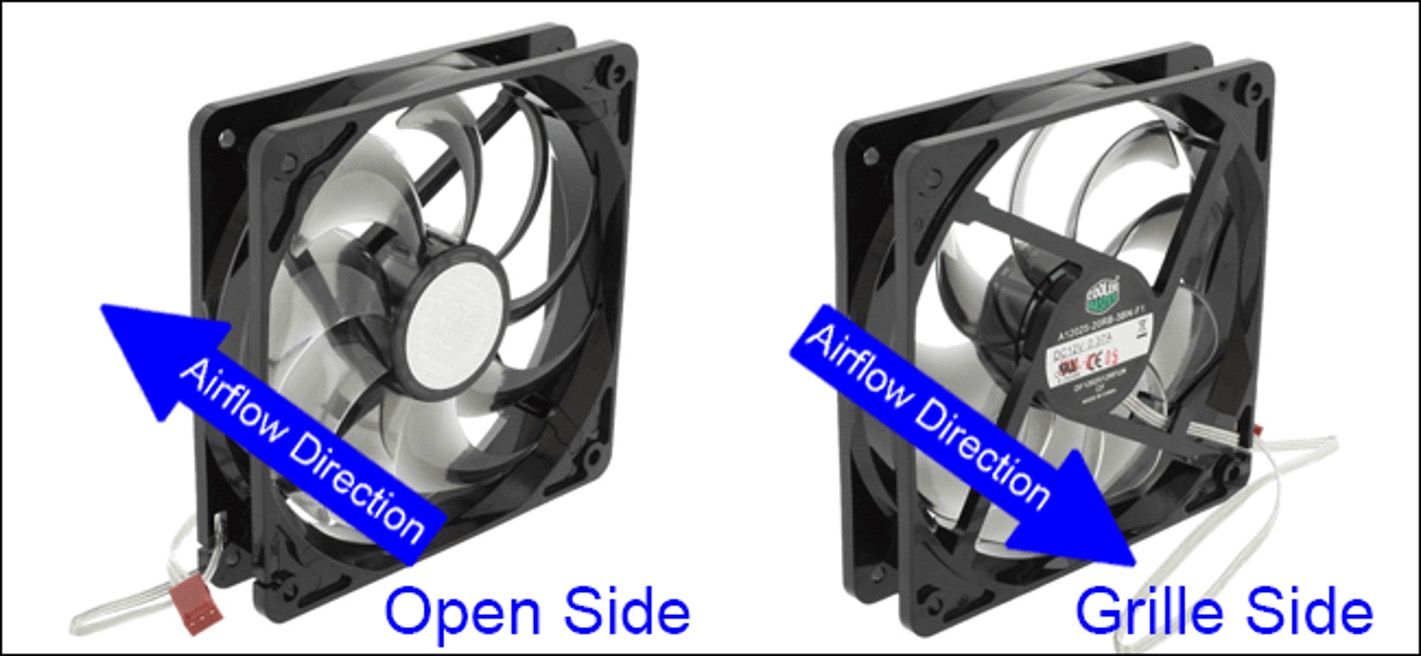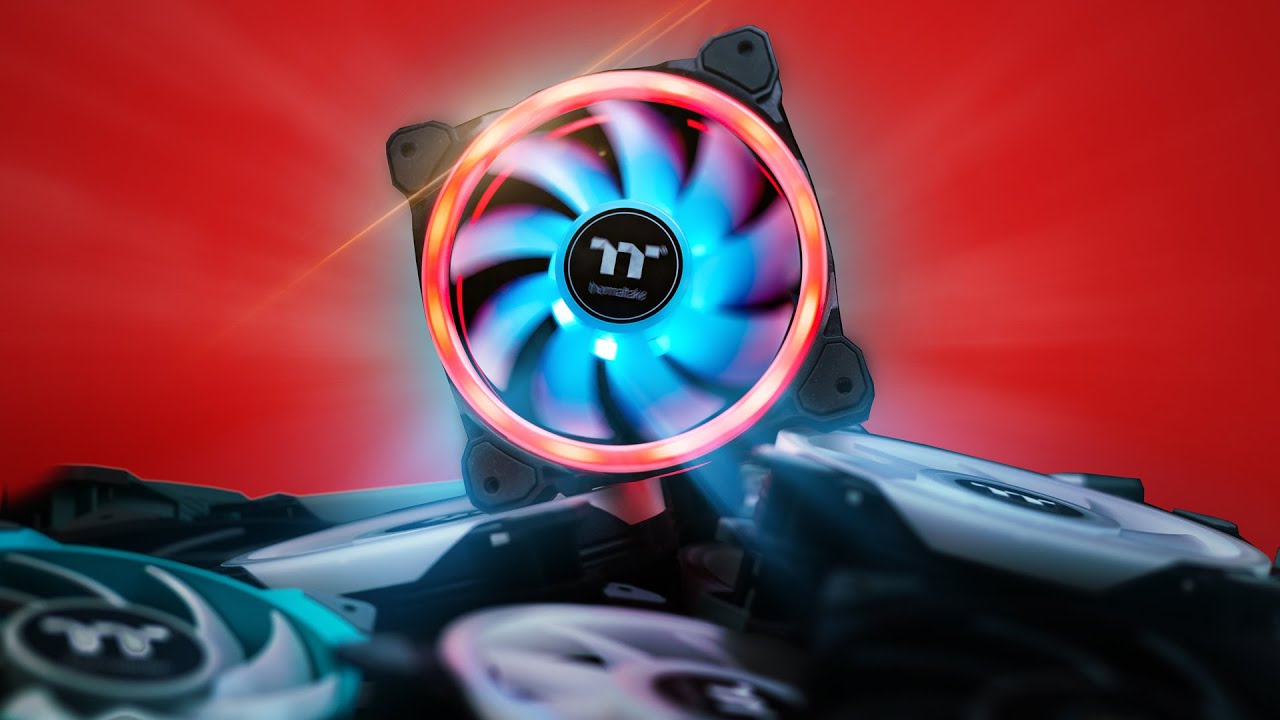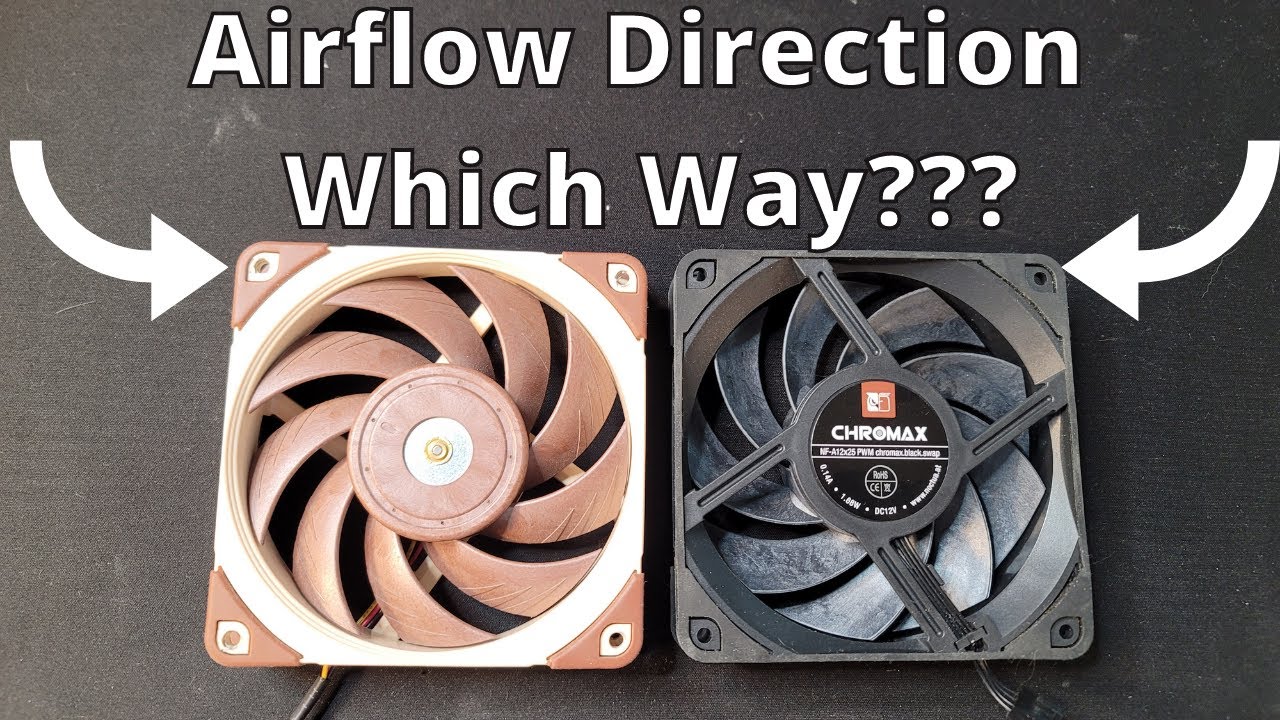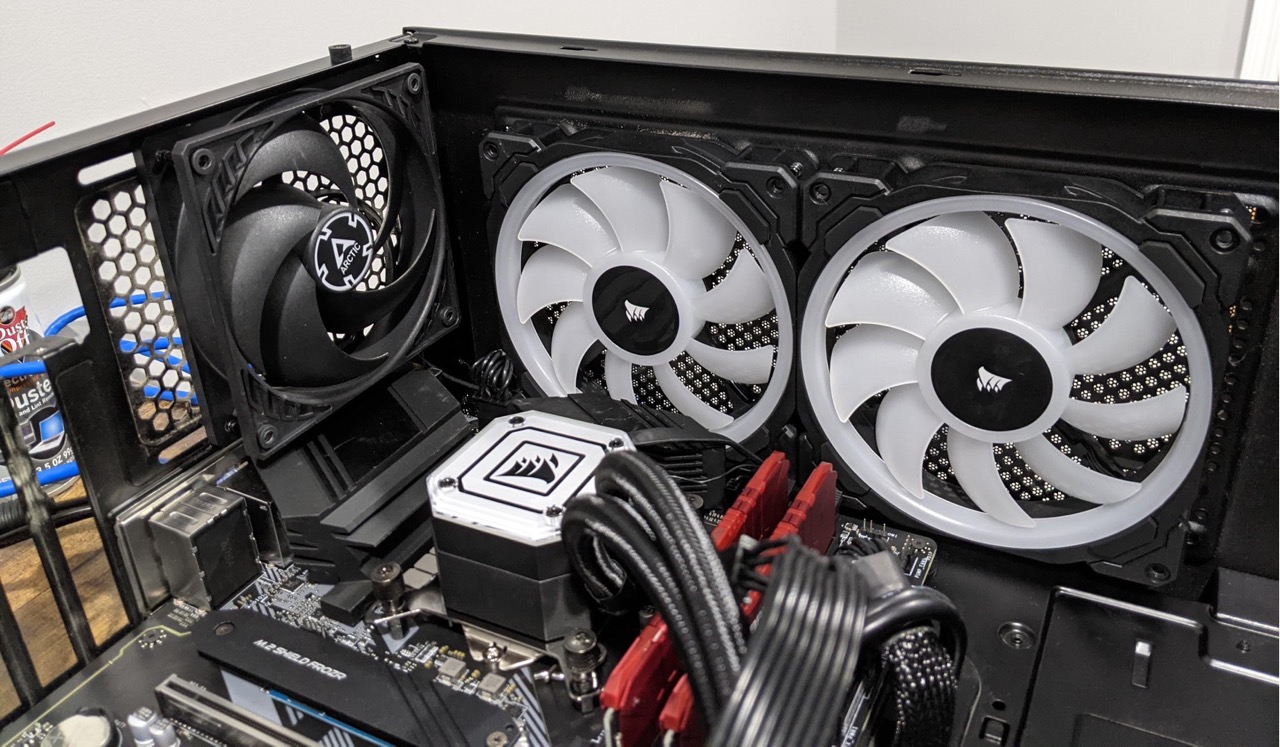Introduction
Welcome to our guide on understanding the airflow direction of case fans. If you’ve ever peeked inside your computer case, you may have noticed these small, seemingly insignificant fans scattered throughout. However, these case fans play a crucial role in ensuring that your computer stays cool and performs optimally.
Understanding how these case fans work, particularly the direction in which they pull or push air, is essential for maintaining proper airflow within your computer case. In this guide, we will explore the different types of case fans and their respective airflow directions to help you make informed decisions about your computer cooling system.
When it comes to computer cooling, airflow is a vital factor. Without adequate airflow, your computer components can overheat, leading to reduced performance, system instability, and even permanent damage. One incorrect placement or misconfiguration of case fans can disrupt the delicate balance of airflow within your computer case, hindering the cooling process.
Before diving into the specifics of airflow direction, it’s important to distinguish between two common types of case fans: intake fans and exhaust fans. Intake fans draw cool air into the case, while exhaust fans expel warm air out of the case. Proper positioning and configuration of these fans ensure a continuous flow of cool air and efficient removal of hot air, helping to maintain optimal temperatures for your computer’s components.
Case fans, regardless of their type, can be further categorized based on their placement within the computer case. Common locations include the front, rear, top, side, and bottom areas of the case. Each location comes with its own unique considerations and requires specific airflow directions to achieve optimal cooling performance.
In the following sections, we will explore the airflow direction for various case fan placements in detail, guiding you in determining the correct setup for your specific needs. So let’s get started by examining the front intake fans and how they contribute to the overall airflow in your computer case.
What is a case fan?
A case fan, also known as a computer fan or cooling fan, is a small electrical device designed to circulate air within a computer case. Its primary function is to dissipate heat generated by the computer’s internal components, such as the CPU, GPU, and hard drives. By keeping these components at optimal temperatures, case fans help to prolong their lifespan and maintain stable performance.
Case fans come in various sizes and shapes, with the most common being 80mm, 120mm, and 140mm fans. They feature blades, usually made of plastic or metal, that rotate when powered on. As they spin, they create airflow, either pulling air into the case or pushing it out, depending on their configuration.
Efficient cooling is crucial for a computer, especially for those used in gaming or resource-intensive tasks. Without proper cooling, the heat generated by the components can build up, leading to thermal throttling, reduced performance, and potential hardware damage. This is where case fans come into play, significantly contributing to overall system stability and longevity.
In addition to maintaining temperatures, case fans can also help reduce noise levels. By increasing the airflow within the case, fans help dissipate heat more effectively, preventing the need for the system’s cooling components to work extra hard. This, in turn, reduces the RPM (rotations per minute) of the fans, resulting in quieter operation.
High-quality case fans are often equipped with features such as ball bearings or fluid dynamic bearings, which increase their lifespan and reduce noise even further. Additionally, some fans incorporate RGB lighting, allowing users to customize the aesthetic appearance of their computer case.
It’s important to note that case fans work in conjunction with other cooling components, such as heat sinks and liquid cooling systems. These components help to transfer the heat away from the CPU and GPU, and the case fans ensure that the warm air is efficiently removed from the case, preventing hotspots and maintaining an overall cool environment.
Throughout the remainder of this guide, we will discuss the different types of case fans and their specific airflow patterns. Understanding these airflow directions will empower you to choose the right fan setup for your computer case, optimizing cooling performance and maintaining a stable operating temperature.
The importance of correct airflow
Having the correct airflow within your computer case is vital for the overall health and performance of your system. Efficient airflow ensures the proper cooling of components, prevents overheating, and maintains stable operation, particularly during demanding tasks such as gaming or video rendering.
When components generate heat, such as the CPU and GPU during heavy usage, it is crucial that this heat is quickly removed from the vicinity to prevent thermal throttling and potential damage. Without proper airflow, the accumulated heat can lead to increased temperatures and reduced performance, as well as a shorter lifespan of components.
One of the primary benefits of correct airflow is preventing hotspots within the computer case. Hotspots occur when there is inadequate ventilation and an accumulation of hot air around specific components. This can lead to localized overheating, which is detrimental to the stability and longevity of the affected parts. Proper airflow ensures that hot air is promptly expelled, preventing the occurrence of hotspots.
Another important aspect of correct airflow is the removal of dust and debris. As air circulates within the case, it tends to carry along small particles that can settle on components and obstruct airflow paths. Over time, this can lead to a build-up of dust, negatively impacting cooling efficiency. By establishing a proper airflow pattern that includes intake and exhaust points, you can effectively mitigate the accumulation of dust and maintain clean internals.
In addition to cooling and dust management, correct airflow also contributes to the reduction of noise levels. When components overheat, the system’s cooling fans, particularly the CPU and GPU fans, need to ramp up their speeds to compensate. This can result in increased fan noise, which can be quite distracting, especially during quiet and intensive tasks. By maintaining proper airflow and cooling, fans can operate at lower speeds, resulting in quieter system operation.
Furthermore, correct airflow can also improve the overall system stability and performance. Uncontrolled heat can cause components to throttle, reducing their processing capabilities and potentially causing system crashes or instability. By managing temperatures through efficient airflow, you can help ensure optimal performance even under demanding workloads.
As we delve into the different types of case fans and their respective airflow directions in the following sections, keep in mind the importance of correct airflow. Understanding the airflow patterns and strategically positioning fans within your computer case will help you create a well-ventilated system that maximizes cooling efficiency, minimizes dust accumulation, reduces noise levels, and ultimately enhances the performance and lifespan of your components.
Pulling vs pushing air
When it comes to case fans, there are two primary methods by which they can move air: pulling or pushing. Understanding the difference between these two airflow methods is crucial in determining how to position the fans within your computer case.
Pulling air: Case fans that pull air draw cool air into the case, helping to provide fresh air to the internal components. These fans are usually positioned as intake fans, often located at the front or side of the case. As these fans spin, they create a low-pressure zone inside the case, which allows cooler air from the outside to be pulled inside.
Pushing air: On the other hand, case fans that push air work by expelling warm air out of the case. Positioned as exhaust fans, they are usually located at the rear or top of the case. As these fans rotate, they create a high-pressure zone, forcing the warm air out of the case and maintaining a continuous flow of cooling air.
Both pulling and pushing air methods have their advantages and specific use cases. When deciding how to configure your case fans, it’s essential to consider factors such as the arrangement of other fans, the layout of your components, and the overall airflow dynamics within your computer case.
Intake fans that pull air are typically placed in areas where fresh air is readily available, such as the front panel or side panel. This positioning ensures a constant supply of cool air to the internal components, helping to lower the overall temperature. By pulling in cool air, these fans contribute to positive pressure within the case, preventing dust from seeping in through unfiltered openings.
Exhaust fans that push air are typically placed in areas where warm air tends to accumulate, such as the rear or top of the case. By expelling the warm air, these fans help to maintain a stable operating temperature for the components. This positioning contributes to negative pressure within the case, which can aid in the removal of heat and ensure efficient cooling.
In certain cases, a combination of both pulling and pushing air methods can be used to optimize airflow within the case. By strategically positioning intake and exhaust fans, you can create a balanced and efficient cooling system. For instance, using front intake fans in combination with rear exhaust fans results in a direct flow of cool air into the case, while expelling warm air from the rear, promoting effective heat dissipation.
Throughout the following sections, we will explore fan placement in more detail, discussing the specific airflow directions based on different locations within the computer case. Understanding the dynamics of pulling and pushing air will help you make informed decisions about fan positioning and achieve the best possible cooling performance for your system.
Front intake fans
Front intake fans play a critical role in the airflow dynamics within a computer case. Positioned at the front of the case, these fans draw cool air from outside and direct it towards the internal components. When configured correctly, front intake fans can significantly improve the cooling performance of your system.
The primary purpose of front intake fans is to provide a steady supply of fresh, cool air to the components housed within the case. By pulling in cool air from the outside, these fans assist in lowering the overall temperature of the system, particularly for components that generate a significant amount of heat, such as the CPU and GPU.
The positioning of front intake fans is typically behind a mesh or perforated panel on the front of the case. This design allows sufficient airflow while also acting as a barrier against dust and debris. Some computer cases feature dust filters in front of the intake fans, further preventing the accumulation of dust and ensuring cleaner internals.
For optimal cooling performance, it is essential to consider the number and size of the front intake fans. Most cases support multiple front intake fans, such as two or three 120mm fans or a larger 140mm fan. The number of fans you should use depends on factors like the size of your case, the power and heat output of your components, and the level of noise you find acceptable.
When configuring front intake fans, it is generally recommended to place them evenly spaced to ensure balanced airflow. This setup helps prevent pockets of stagnant air and promotes efficient cooling throughout the case. Additionally, positioning the fans slightly higher or lower within the front panel can also help direct the airflow towards specific components, such as the CPU or GPU.
It’s important to note that front intake fans should work in conjunction with exhaust fans to establish a proper airflow path. The intake fans pull cool air into the case, while the exhaust fans expel the warm air. This continuous flow of air helps to maintain stable operating temperatures and promotes efficient heat dissipation.
Overall, front intake fans are essential in establishing a positive pressure system, where fresh air is constantly supplied into the case while preventing dust accumulation. By strategically positioning and configuring the front intake fans, you can create an effective cooling setup that contributes to optimal performance and longevity of your components.
Rear exhaust fans
Rear exhaust fans play a crucial role in maintaining proper airflow and efficient heat removal within a computer case. Positioned at the rear of the case, these fans expel warm air generated by internal components, helping to maintain optimal operating temperatures and prevent the buildup of heat.
The primary function of rear exhaust fans is to create airflow and establish a pathway for warm air to leave the case. As components such as the CPU and GPU generate heat during operation, this warm air needs to be efficiently removed to prevent overheating and performance degradation.
Rear exhaust fans are typically positioned near the top or rear of the case, in close proximity to the CPU and GPU. This allows for swift removal of warm air from the area where heat is most concentrated. When positioned properly, rear exhaust fans help to create a flow of air that draws in cool air from the front and expels the warm air out the back, promoting effective heat dissipation.
To optimize cooling performance, it is important to consider the size and number of rear exhaust fans. Most cases support a single 120mm or 140mm rear exhaust fan, but some larger cases may accommodate multiple fans. The number of fans will depend on the size of the case, the level of heat generated by the components, and the desired level of cooling performance.
When configuring rear exhaust fans, it is recommended to position them at the highest point of the case or near the CPU and GPU to effectively remove the warm air generated by these components. The fans should be mounted in a way that allows the air to be directed towards the rear of the case and expelled outside. In situations where multiple rear exhaust fans are used, it is important to ensure they work in harmony and do not disrupt each other’s airflow.
Rear exhaust fans are typically designed to operate at a higher RPM (rotations per minute) than front intake fans. This increased speed helps create a higher pressure zone at the rear, allowing for the effective removal of warm air. However, it’s important to note that higher RPM can result in increased noise levels, so consideration should be given to fan specifications and personal preferences.
When combined with front intake fans, rear exhaust fans complete the airflow cycle within a computer case. The intake fans bring in cool air, while the exhaust fans expel the warm air, creating a continuous flow and maintaining stable operating temperatures for the components.
In summary, rear exhaust fans play a vital role in maintaining airflow balance and effectively removing warm air from a computer case. By positioning and configuring these fans correctly, you can ensure optimal cooling performance, prevent heat buildup, and promote the longevity and stability of your system’s components.
Top-mounted fans
Top-mounted fans are an important component of a well-designed cooling system in a computer case. Positioned at the top of the case, these fans are typically used as exhaust fans to expel warm air from the system. By efficiently removing hot air from the case, top-mounted fans contribute to maintaining optimal operating temperatures and preventing heat buildup.
The primary function of top-mounted fans is to assist in the expulsion of warm air that rises within the case. As warm air naturally tends to rise, top-mounted fans provide a pathway for this air to escape. They work in conjunction with other fans in the system, such as front intake fans and rear exhaust fans, to establish a continuous flow of cool air in and hot air out.
When considering the placement and configuration of top-mounted fans, it is important to determine whether they will be used as exhaust fans or, in some cases, as additional intake fans. The choice will depend on factors such as the overall airflow dynamics of the case, the specific components used, and the desired cooling performance.
If used as exhaust fans, top-mounted fans should be positioned towards the rear of the case, near the exhaust vents. This allows them to effectively remove the warm air that accumulates at the top of the case. It’s important to ensure that no obstructions, such as cables or components, block the path of airflow from these fans.
If used as additional intake fans, top-mounted fans can help draw in cool air from outside the case. This configuration can be beneficial in situations where the components inside the case generate a high amount of heat and require extra cooling. However, it’s crucial to maintain a proper balance between intake and exhaust fans to prevent disruptions to the overall airflow.
The size and number of top-mounted fans will depend on the case design and the available space. Common sizes include 120mm and 140mm, but larger cases may support multiple fan sizes or even radiator mounts for liquid cooling solutions. As with other fans, consideration should be given to fan specifications and noise levels when selecting and configuring top-mounted fans.
It’s worth mentioning that some cases come with built-in fan placement options and vents on the top panel. These cases are designed to facilitate the use of top-mounted fans, making it easier to establish proper ventilation and cooling performance.
In summary, top-mounted fans are an important element of a comprehensive cooling system. When properly positioned and configured, they assist in the effective removal of warm air from the case, improving overall airflow and maintaining optimal operating temperatures for the components. Whether used as exhaust fans or additional intake fans, top-mounted fans contribute to the stability, performance, and longevity of your computer system.
Side-panel fans
Side-panel fans are an optional but effective addition to a computer case’s cooling system. Positioned on the side panel of the case, these fans provide an extra source of airflow that can help improve overall cooling performance and reduce hotspots.
The main purpose of side-panel fans is to provide direct airflow to specific components, such as the GPU and motherboard. These components can generate significant amounts of heat during operation, and having a side-panel fan helps to cool them down more efficiently.
One of the advantages of side-panel fans is that they can help cool components that are not directly in the path of other fans, such as front intake fans or top-mounted fans. This can be particularly beneficial for systems with powerful graphics cards or overclocked components that require additional cooling.
When positioning side-panel fans, it’s crucial to consider the specific layout and design of your case. Some cases are specifically designed to accommodate side-panel fans, with dedicated mounting points and airflow channels. In cases where there are no built-in mounts for side fans, it may be necessary to use aftermarket solutions or modify the case to accommodate them.
The size and number of side-panel fans will depend on the available space and the cooling requirements of the components. Common sizes include 120mm and 140mm fans, but larger cases may support multiple fans or even larger sizes. Additionally, some cases may have vents or grills on the side panel to enhance airflow, helping to direct the air towards the components that need it most.
It is worth noting that adding side-panel fans may have an impact on the overall pressure balance within the case. Depending on the configuration of other fans, the addition of side fans may disrupt the established airflow pattern. It’s important to assess the impact on airflow dynamics and make adjustments as needed to ensure a well-balanced cooling system.
Furthermore, side-panel fans can contribute to the aesthetic appeal of your system. Many fans come with RGB lighting options, allowing you to create a visually pleasing display through the side panel and adding an extra touch of style to your computer build.
In summary, side-panel fans are an optional but effective addition to a computer case’s cooling system. By providing direct airflow to important components, they aid in the efficient cooling of components, particularly the GPU and motherboard. When properly positioned and balanced with other fans, side-panel fans can enhance cooling performance and improve the overall stability and longevity of your system.
Bottom-mounted fans
Bottom-mounted fans are becoming increasingly popular as an additional component in computer case cooling systems. Positioned at the bottom of the case, these fans provide a unique source of airflow that can effectively cool key components and contribute to overall system stability.
The main purpose of bottom-mounted fans is to draw in cool air from beneath the case and direct it towards critical components, such as the graphics card and power supply. By providing a direct source of fresh air to these components, bottom-mounted fans help prevent overheating and maintain optimal operating temperatures.
Bottom-mounted fans are particularly beneficial for cases that feature a separate compartment or ventilation at the bottom, allowing cool air to enter directly from outside the case. This approach can be especially advantageous for systems with high-performance components, as it ensures a constant supply of cool air for efficient cooling.
When positioning bottom-mounted fans, it’s important to consider the available space and the specific layout of your case. Some cases come with dedicated mounting points and filters at the bottom, which are designed to accommodate bottom-mounted fans. These features facilitate the installation and help maintain proper dust management.
The size and number of bottom-mounted fans will depend on the case design and the available space. Common sizes include 120mm and 140mm fans, but larger cases may support multiple fans or larger sizes. It’s essential to ensure that the fans are compatible with the available space and that they do not obstruct other components or impede the overall airflow within the case.
Adding bottom-mounted fans can also contribute to the overall cooling efficiency of a system, especially when combined with other fans in the case. Their positioning allows them to work in conjunction with top-mounted or rear exhaust fans to establish a steady flow of air throughout the case, effectively expelling warm air and bringing in fresh, cool air from outside.
Furthermore, bottom-mounted fans can contribute to noise reduction by enabling a more balanced distribution of airflow. By providing an additional intake point for cool air, the other fans in the case may not need to work as hard, resulting in potentially lower fan speeds and reduced noise levels.
Overall, bottom-mounted fans are a valuable addition to a computer case cooling system, particularly in cases with dedicated compartments or ventilation at the bottom. By drawing in fresh air and directing it towards critical components, these fans contribute to improved cooling performance and enhance the overall stability and longevity of your system.
How to determine the correct airflow direction
Determining the correct airflow direction within your computer case is crucial for effective cooling and optimal system performance. By establishing a clear airflow path, you can ensure that cool air is directed towards components in need of cooling and that warm air is efficiently expelled from the case. Here are the steps to help you determine the correct airflow direction:
1. Identify your intake fans: Determine the location of the intake fans in your case. These fans are responsible for drawing cool air into the system. Typically, they are positioned at the front or side of the case and feature a clear airflow direction.
2. Determine the position of your exhaust fans: Locate the exhaust fans in your case. These fans expel warm air from the system. They are usually positioned at the rear or top of the case. Identify their airflow direction as well.
3. Consider the layout of your components: Analyze the placement of your components, especially those that generate a significant amount of heat, such as the CPU and GPU. Ensure that the airflow direction of the intake fans is directed towards these components, providing them with a fresh supply of cool air.
4. Create a flow of air: Establish a clear and balanced flow of air within the case. The general guideline is to have cool air enter through the intake fans and pass over the components that need cooling. This air then exits through the exhaust fans, carrying away the heat.
5. Maintain positive or negative pressure: Decide whether you want to maintain positive pressure (more intake than exhaust fans) or negative pressure (more exhaust than intake fans) within the case. Positive pressure helps prevent dust from entering through unfiltered openings, while negative pressure aids in the efficient removal of heat. Choose the setup that suits your preferences and case design.
6. Consider additional fans: Depending on the size and layout of your case, you may have the option to add side-panel or bottom-mounted fans. Determine their airflow direction and place them strategically to complement the overall airflow pattern.
7. Monitor temperatures and adjust if necessary: After configuring your airflow setup, monitor the temperatures of your components using software monitoring tools. If you notice high temperatures or inadequate cooling, consider adjusting fan speeds, repositioning fans, or adding additional fans to improve the airflow within the case.
By following these steps, you can determine the correct airflow direction for your computer case. Remember to maintain a balance between intake and exhaust fans, consider the layout of your components, and monitor temperatures to ensure your system stays cool and performs optimally.
Conclusion
Understanding the airflow direction and configuring case fans correctly is vital for maintaining optimal cooling performance and ensuring the longevity of your computer components. By following the guidelines outlined in this guide, you can create an efficient and balanced airflow system within your computer case.
Front intake fans serve to bring in cool air, while rear exhaust fans expel warm air. Top-mounted fans and side-panel fans can provide additional cooling support for specific components. Bottom-mounted fans draw in cool air from beneath the case, contributing to overall system cooling.
When configuring your case fans, it’s important to consider factors such as the layout of your components, the available space in your case, and the desired airflow dynamics. Establishing a clear and balanced airflow path ensures that cool air is directed towards components that require cooling, while warm air is efficiently expelled from the case.
Maintaining positive or negative pressure within the case can also impact the overall cooling performance and dust management. Positive pressure prevents dust from entering through unfiltered openings, while negative pressure aids in the removal of heat.
Remember to regularly monitor the temperatures of your components and make adjustments to fan speeds, fan positioning, or adding additional fans if necessary. This will help ensure that your computer runs at optimal temperatures and performs at its best.
In conclusion, understanding the dynamics of case fan airflow and configuring them correctly play a vital role in maintaining a cool and efficient system. By considering the location, size, and airflow direction of each case fan, you can achieve optimal cooling performance and keep your computer functioning at its peak. With a well-planned cooling system, you can enjoy better stability, longevity, and overall performance from your computer. Happy computing!







